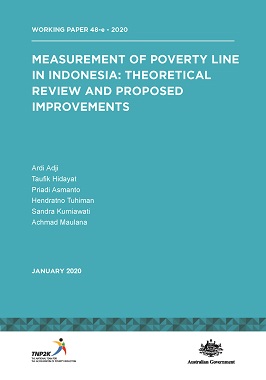Measurement of Poverty Line in Indonesia: Theoretical Review and Proposed Improvements
Poverty is essentially the inability to meet certain basic needs such as food, clothing, and shelter. The measurement of poverty commonly used in developing countries is absolute poverty, which compares household income or expenditures and the poverty line. The line is based upon the minimum expenditures or income needed to obtain: (i) a quantity of food to fulfill certain calorie needs; and (ii) the minimum non-food expenditures for a decent standard of living.
The poverty measurement method was updated in 1998. The update was made by enhancing the food basket and the non-food components based on the limited surveys in ten provinces. Calculation of the food poverty line is based on the minimum energy needs of the Indonesian people, namely 2,100 calories per day which was recommended by the 1978 National Workshop on Food and Nutrition (Widyakarya Nasional Pangan dan Gizi: WNPG).
This method resulted in expansion of the commodities in the food basket in each region, leading to 52 commodity types in the national food basket. The calculation of the non-food poverty line is based on 51 commodities in urban areas and 47 commodities in rural areas, including housing, clothing and footwear, health care, education costs, transportation, and various other goods and services.
People’s consumption pattern in Indonesia has changed and is reflected in an updated minimum calorie consumption limit per capita of 2,150 calories. This change is the result of WNPG 2012 and is in accordance with the most recent Recommended Nutritional Allowance (Angka Kecukupan Gizi: AKG) in the Minister of Health Regulation No. 75/2013.
This article attempts to offer a proposed update of the calculation of poverty line, by comparing the food and calories poverty line calculation method, non-food poverty line calculation method, and the real method. This article also presents the simulation of poverty indicators calculation as the benchmark for the proposed improvement of future measurement of poverty line.
